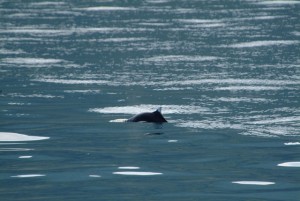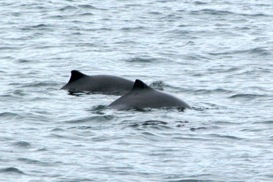
We are fascinated by porpoise. We’ve published abundance estimates for harbor and Dall’s porpoise in the continental shelf waters of BC and then reanalyzed the data to produce pretty maps of harbor and Dall’s porpoise distribution.
Our colleague Anna Hall has spent years studying these neat critters and is helping to identify how these two ecologically similar species share the waters of the Salish Sea, while avoiding competition and together with Anna and Arliss Winship, Rob published a paper trying to estimate how many porpoise are being caught in salmon gillnets.

So, we’re pretty invested in these species.
Our latest research effort on porpoise is a bit of a stretch for us. In July 2009, our colleagues Line Kyhn and Jakob Tougaard visited from Denmark with some sophisticated recording equipment. Hardware issues have made it difficult to compare echolocation patterns of these two species before, but Line worked magic! Line’s found some compelling evidence that these two species can be told apart acoustically — at least if you can hear over 120 kHz. Check out her PhD thesis for this work, and for results on other dolphins and porpoise around the world.
This may sound esoteric, but there are two reasons it’s so exciting. First, it teaches us something new about the biology of the species — how they avoid overlap with each other, and how they try to avoid being heard by mammal-eating killer whales. Secondly, it guides real-world conservation efforts, so that passive acoustic monitoring programs can detect which of these species is present when visual surveys are not possible — in remote areas, or at night, or in rough weather. That will help us identify important habitats, and protect them, as human activities on the BC coast continue to grow. We hope to have a paper on this in a scientific journal in the coming year. We’ll keep you posted.

